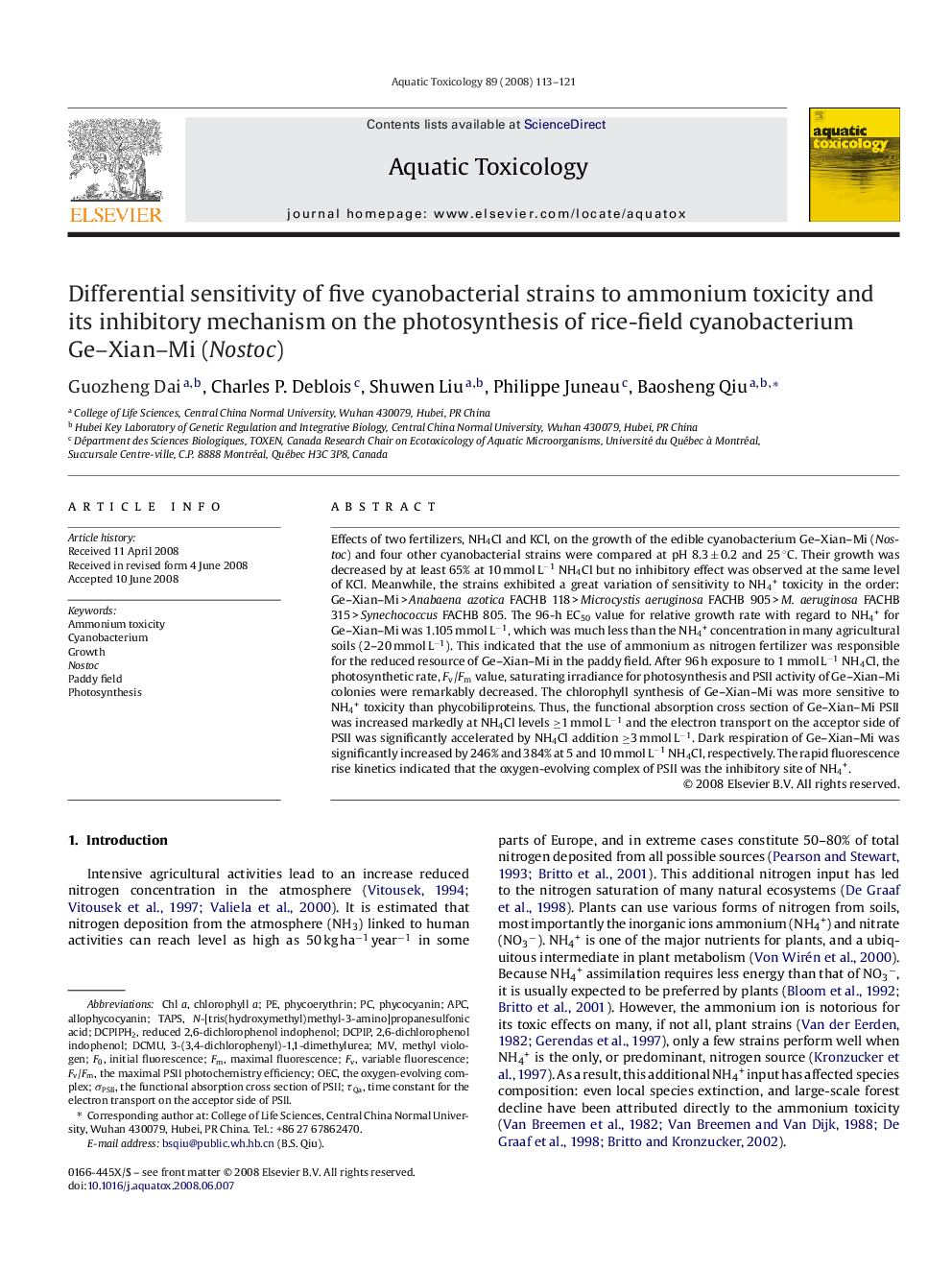| Article ID | Journal | Published Year | Pages | File Type |
|---|---|---|---|---|
| 4530719 | Aquatic Toxicology | 2008 | 9 Pages |
Effects of two fertilizers, NH4Cl and KCl, on the growth of the edible cyanobacterium Ge–Xian–Mi (Nostoc) and four other cyanobacterial strains were compared at pH 8.3 ± 0.2 and 25 °C. Their growth was decreased by at least 65% at 10 mmol L−1 NH4Cl but no inhibitory effect was observed at the same level of KCl. Meanwhile, the strains exhibited a great variation of sensitivity to NH4+ toxicity in the order: Ge–Xian–Mi > Anabaena azotica FACHB 118 > Microcystis aeruginosa FACHB 905 > M. aeruginosa FACHB 315 > Synechococcus FACHB 805. The 96-h EC50 value for relative growth rate with regard to NH4+ for Ge–Xian–Mi was 1.105 mmol L−1, which was much less than the NH4+ concentration in many agricultural soils (2–20 mmol L−1). This indicated that the use of ammonium as nitrogen fertilizer was responsible for the reduced resource of Ge–Xian–Mi in the paddy field. After 96 h exposure to 1 mmol L−1 NH4Cl, the photosynthetic rate, Fv/Fm value, saturating irradiance for photosynthesis and PSII activity of Ge–Xian–Mi colonies were remarkably decreased. The chlorophyll synthesis of Ge–Xian–Mi was more sensitive to NH4+ toxicity than phycobiliproteins. Thus, the functional absorption cross section of Ge–Xian–Mi PSII was increased markedly at NH4Cl levels ≥1 mmol L−1 and the electron transport on the acceptor side of PSII was significantly accelerated by NH4Cl addition ≥3 mmol L−1. Dark respiration of Ge–Xian–Mi was significantly increased by 246% and 384% at 5 and 10 mmol L−1 NH4Cl, respectively. The rapid fluorescence rise kinetics indicated that the oxygen-evolving complex of PSII was the inhibitory site of NH4+.
